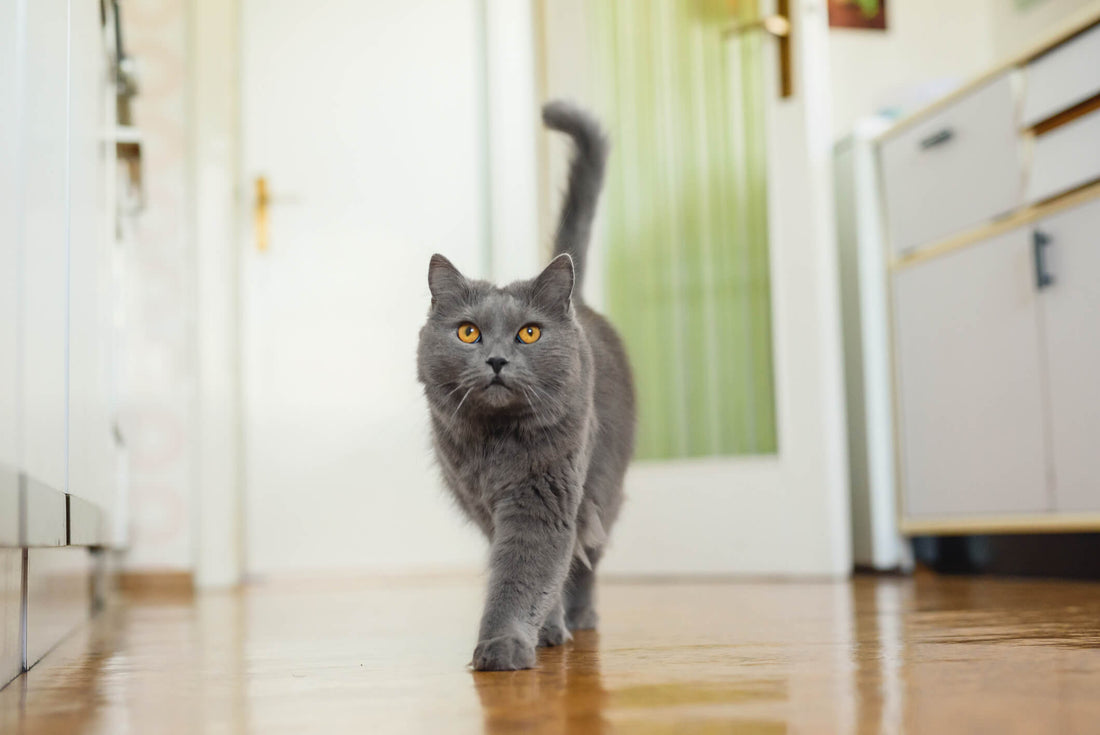
Natural Support for Degenerative Joint Disease in Cats
Degenerative joint disease is one of the most common ailments among senior cats. In many cases, joint diseases are unavoidable because they’re part of the natural aging process. Even cats who spend years living a healthy, active lifestyle can develop arthritis or other degenerative diseases.
While there’s no cure for joint problems, there are a ton of ways pet parents can relieve their kitty’s discomfort. Your cat doesn’t have to rely on medication, either! The following are all-natural methods that can improve an arthritic cat’s quality of life:
- Glucosamine and chondroitin: These two compounds are derived from connective tissue in many animals. Their job is to protect chondrocytes, a type of cell that keeps cartilage healthy and strong. Glucosamine and chondroitin are usually combined in supplement form by extracting them from animal connective tissue. They can slow the progression of degenerative joint disease as well as reduce pain and swelling.
- Fish oil: Fish oil is super beneficial for arthritic kitties because it contains omega-3 fatty acids. These healthy fats naturally occur in cold-water fish and possess healing properties for connective tissues. Omega 3s can reduce inflammation, which is a key symptom of osteoarthritis. They lower the swelling in joint cartilage and ease some of the cat’s pain. You can easily mix a small amount of fish oil into their regular food. Plus, cats love the taste of fish!
- Light exercise: Excessive weight can put stress on the joints. For cats with arthritis, obesity worsens joint pain and accelerates their rate of deterioration. Pet parents can alleviate some of that pain by keeping their kitty’s weight under control. Cats need approximately two 15-minute play sessions each day to help them maintain a healthy weight. Exercise has additional benefits like flexibility, mobility and strengthening ligaments around the joints.
- Restricted diet: In addition to exercise, you might need to restrict your cat’s caloric intake to keep the pounds off. Your vet will recommend healthy cat foods and appropriate portion sizes. You should also factor in other sources of calories like treats and table scraps. Be sure to follow a vet’s guidance on how to gradually restrict caloric intake. Cutting back on food too quickly can lead to nutritional deficiencies and extreme weight loss. If you have multiple cats, place the other food bowls where your arthritic kitty can’t access them so they don’t eat more than they should.
- Massages: Massages sooth arthritic pain and make a wonderful bonding activity with your cat (if they’ll allow it). A brief massage session can increase circulation to the joints, alleviate stiffness and improve range of motion. However, it’s important to massage your kitty with the right technique. No pet parent wants to accidentally put their arthritic cat in even more pain! At your cat’s next appointment, ask your vet to teach you a few simple massages you can do at home.
- Physical therapy: Unlike exercise, physical therapy doesn’t involve chasing a toy mouse across the room. Physical therapy is a set of very specific actions designed to improve mobility and ease pain. For arthritic cats, these actions isolate the leg joints and focus on gentle range of motion. Physical therapy can also reduce stiffness in the muscles and joints, which is another common symptom of osteoarthritis. Your vet can demonstrate a few physical therapy exercises that you can implement at home.
- Heating pads: Heat can provide temporary relief for arthritic pain. It melts away stiffness and relaxes supporting ligaments around the joints. Some companies sell pet-friendly heating pads that you can place under the cat’s bed. Don’t use heating pads designed for humans, as these are too hot for cats and may burn them. Placing a hot pad under their bedding creates a warm, cozy place where your arthritic kitty can take a break from the pain.
- Acupuncture: Acupuncture is a traditional practice that’s praised for its ability to dispel pain in all parts of the body. A licensed professional can give acupuncture to arthritic cats for the purpose of easing pain in the joints. They use needles to target specific nerves, which signal the brain to release natural chemicals. These chemicals flood the body and relieve pain where the needles were inserted.
If your cat is living with a degenerative joint disease, prescription drugs aren’t the only option. Arthritic cats can find much relief through natural remedies. Work with your vet to create a diet, lifestyle and exercise regimen that will keep your senior cat limber and active for years to come.


